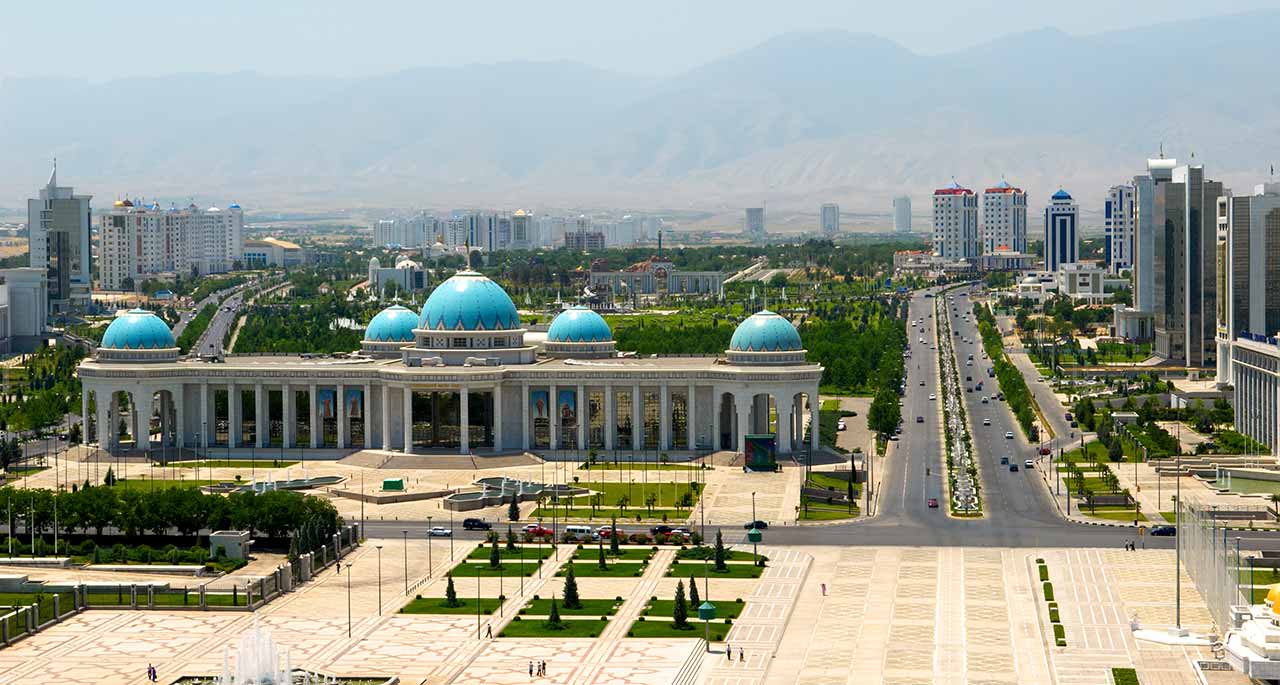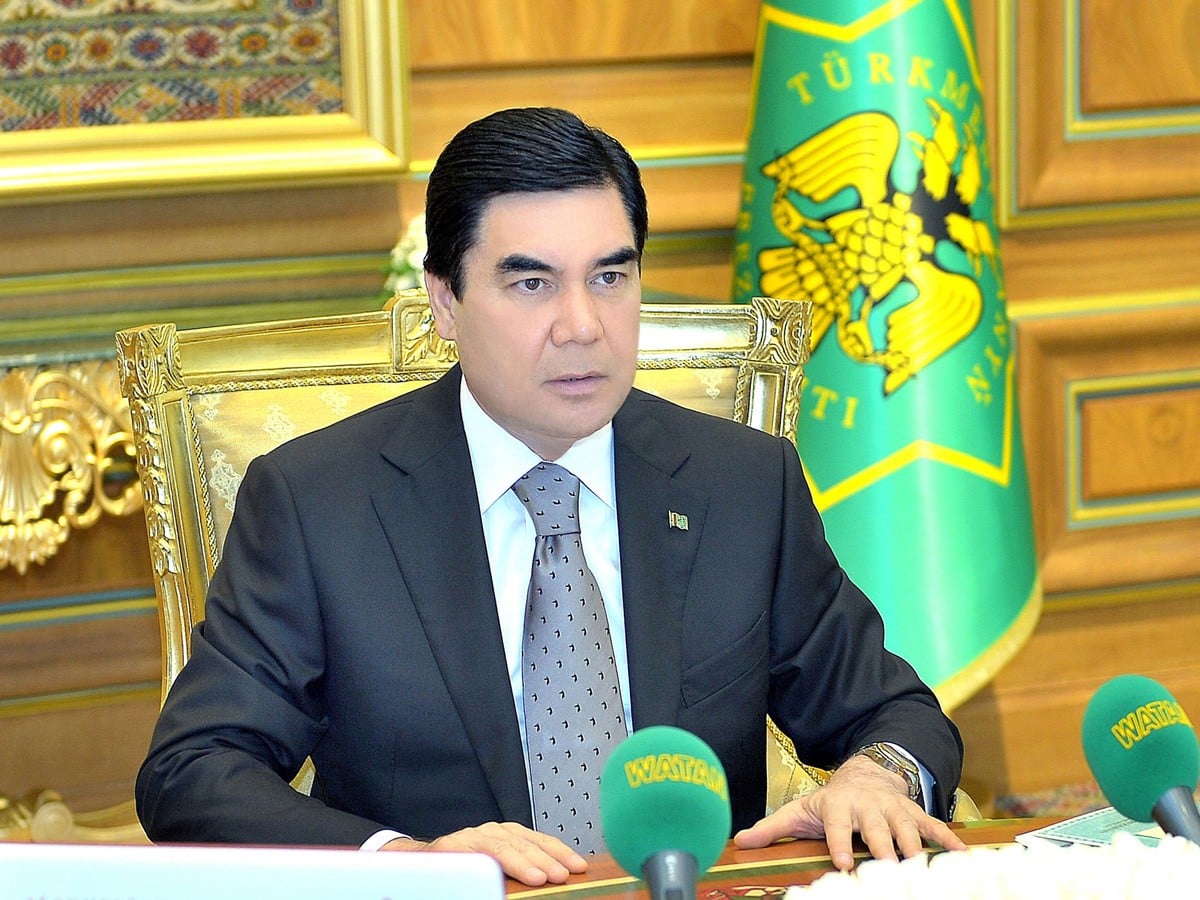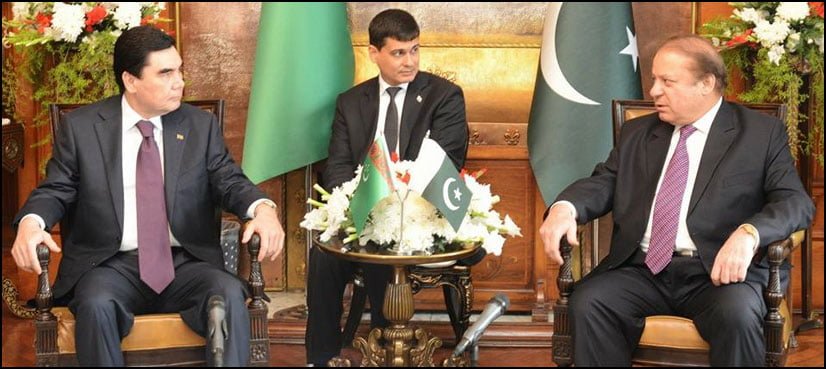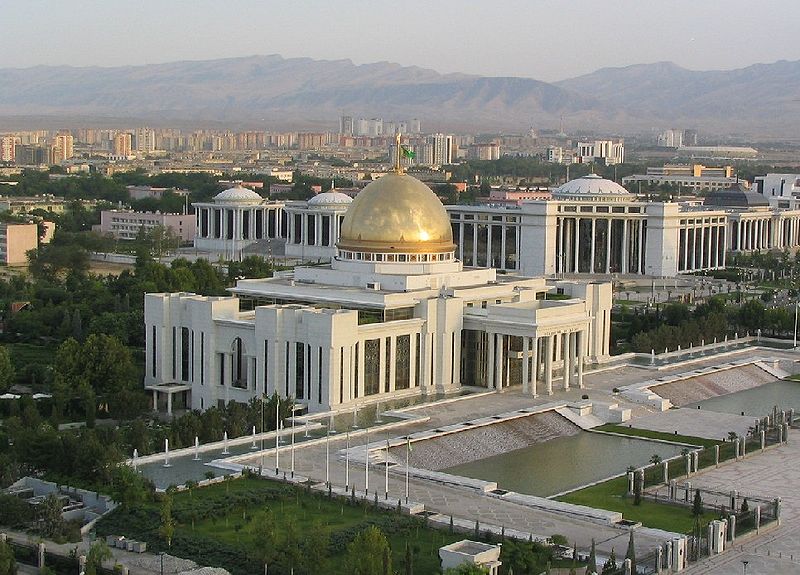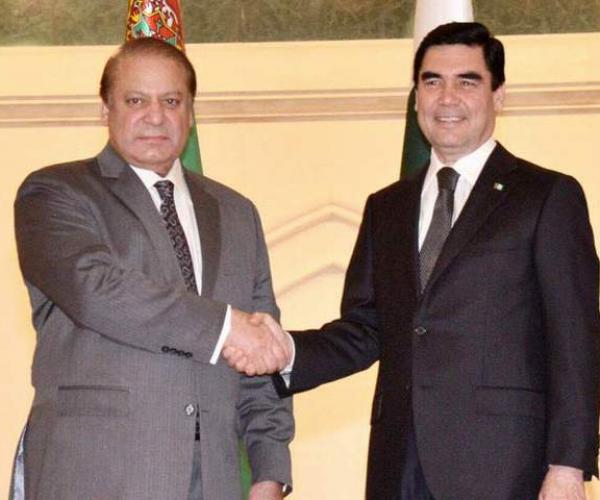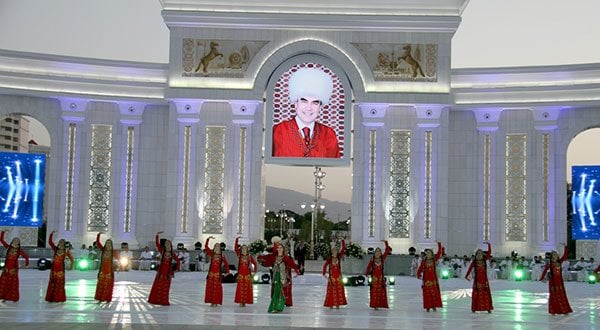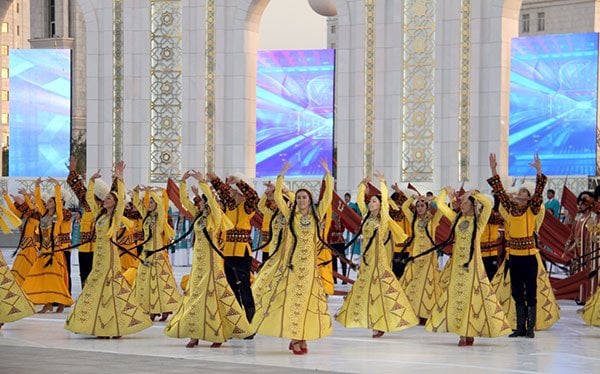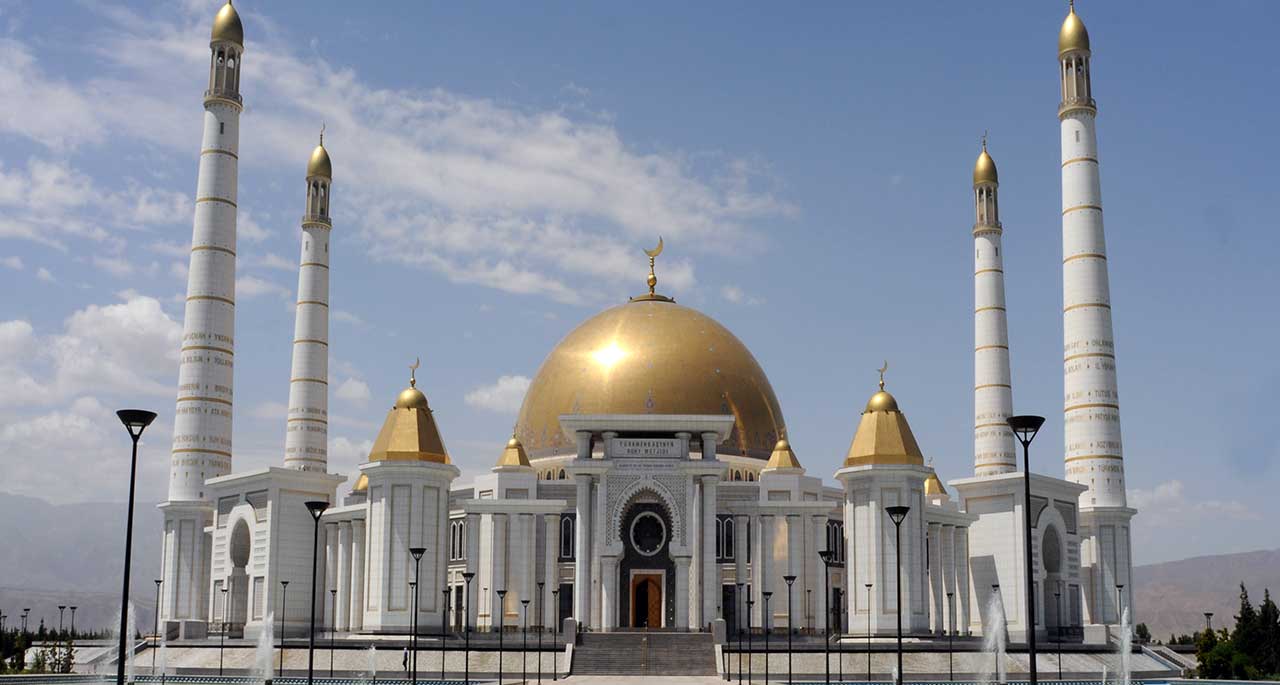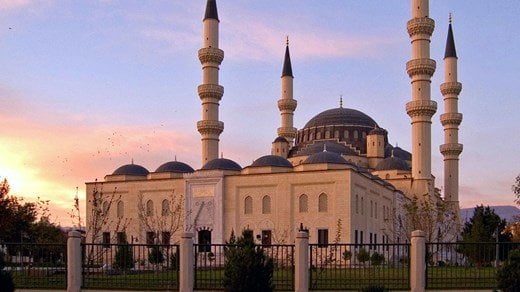Mehmood Ul Hassan Khan
Paradigm shift in foreign policy of Pakistan is getting momentum by each passing day. Now Pakistan has realized the strategic importance of Central Asia Region (CAR) for the easy and smooth supplies of energies and greater socio-economic connectivity. Even stakes of security and fight against terrorism are very high. Keeping in view its multiplier strategic importance, the Prime Minister of Pakistan Mian Nawaz Sharif visited all the countries of Central Asia during 2015. Lots of meaningful MOUs were inked in diversified fields of economy, energy, trade and commerce, massive industrialization, joint ventures, banking and finance, education, tourism, textiles and the last but not the least, aviation. Now future prospects of greater socio-economic prosperity and regional harmony is high and bright too.
H.E. Gurbanguly Berdimuhamedov, the President of Turkmenistan’s Visit to Pakistan (March 2016)
Most recently, H.E. Gurbanguly Berdimuhamedov, the President of Turkmenistan visited Pakistan and had many meaningful meetings with Primer and President of Pakistan. During these high level meetings, Pakistan and Turkmenistan decided to improve connectivity by establishing communication corridors that would be befitting to tapping the potential of trade, economic cooperation, people-to-people contacts and tourism between the two countries in the days to come.
Exchange of Views
The two sides exchanged views on a wide range of bilateral, regional and international issues of mutual interest. The leaders noted with satisfaction that significant progress was made in recent years on bilateral relations and high-level exchanges between the two countries. The two sides emphasised the importance of timely meetings on established bilateral mechanisms for enhancing cooperation in agreed sectors. They reaffirmed their commitment to sustain the momentum of upward trajectory of bilateral ties.
Meaningful Meetings & Dialogues
During the visit, the Turkmen president had a meeting with President Mamnoon Hussain and held talks with Prime Minister Nawaz Sharif. During their meeting, the president and the prime minister underlined the significance of the Turkmenistan-Afghanistan-Pakistan-India (TAPI) gas pipeline project and expressed satisfaction with the foundation of the project that was laid in December 2015. The Prime Minister Nawaz Sharif appreciated the initiative by the president of Turkmenistan for implementation of this important project and agreed to take measures for early completion of this important regional energy project.
Strategic Importance of TAPI
For Pakistan, TAPI is not just a gas transit initiative connecting energy-rich Central Asia with energy-starved South Asia, but a mega project of strategic importance that will open doors for greater regional economic collaboration and integration. Moreover, Pakistan will also import one thousand megawatt of electricity from Turkmenistan and the MOU in this regard was signed during his visit to Turkmenistan last year.
Futuristic Predication
It is hoped that regional energy projects would facilitate regional connectivity and contribute to peace, stability and security by creating interdependence in the region. TAPI gas pipeline will generate economic activity, create job opportunities and improve the living standards. It would also help counter-terrorism and enhance regional trade and development.
Joint Communiqué
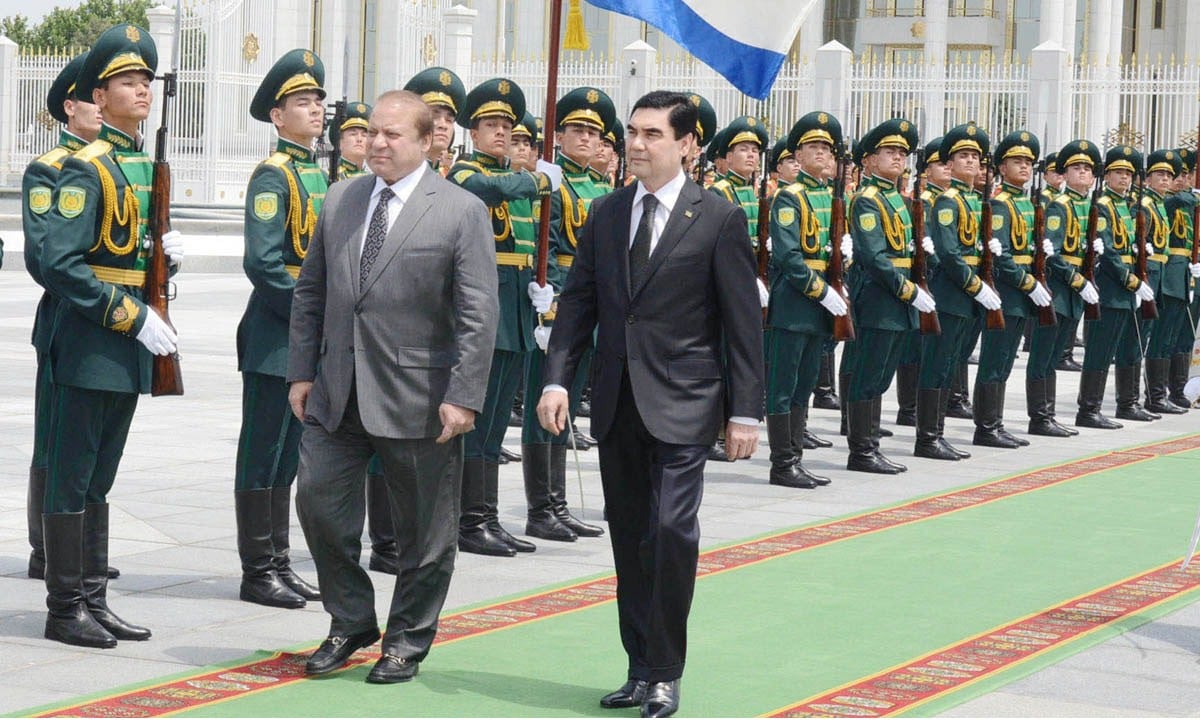
The joint communiqué strongly indicated a strong political will to foster the bilateral relations in terms of greater socio-economic interaction/connectivity, business-to-business coordination, exploration of potential opportunities for joint ventures and foreign direct investments through rigorous commercial diplomacy. It was further agreed to establishing air, road and rail links on a priority basis. The leaders noted that Pakistan and Turkmenistan enjoyed cordial relations, which were characterised by bonds of historical, cultural and religious affinity and mutual respect. “These are rooted deep in the hearts of the people. Both sides attach great importance to the friendship between their people and the need to further strengthen their cooperation.
Turkmenistan is endowed with huge hydrocarbon resources, which can provide energy to Pakistan to meet its needs. Pakistan also supports Turkmenistan’s initiative to establish trans-regional energy corridors.
Further Strengthening of Bilateral Economic & Trade Relations
The two countries also agreed to enhance bilateral economic and trade relations. Both sides realised that the volume of trade did not match the goodwill that existed between the two countries. Both countries agreed to take appropriate measures to enhance bilateral trade. The leaders welcomed the initiative of the Pakistan-Turkmenistan Business Forum on the sidelines of the visit. Both sides agreed that such sector based interactions between businessmen of the two countries should be a regular feature to facilitate bilateral trade and investment.
Importance of High-Level Bilateral Political Interaction
The leaders recognised the importance of high-level bilateral political interaction that provides impetus to all areas of bilateral relations. Moreover, both countries agreed to enhance cooperation on international and regional issues of common interest, and continue coordination within international and regional mechanisms such as the UN, NAM, G-77, ECO and OIC. The two leaders expressed their resolve to work together for regional peace, development and prosperity.
President Berdimuhamedov’S Vision of Socio-Economic Prosperity
On his part, Pakistani Primer appreciated the visionary leadership and sagacity of President Berdimuhamedov that brought prosperity and socio-economic development to Turkmenistan. He congratulated Turkmenistan on the 20th anniversary of Turkmenistan’s Declaration of Neutrality and reaffirmed Pakistan’s full support to this initiative, which contributed to peace and stability in the region. The two sides agreed that bilateral cooperation in all sectors had great potential. They agreed to create conducive conditions and initiate projects for the promotion of infrastructure, agriculture, manufacturing, multimedia technology, banking, environment and energy sectors.
Historic Perspectives
Turkmenistan and Pakistan are two brotherly Muslim countries with unique commonalities of historical and political nature. Turkmenistan and Pakistan have been enjoying excellent economic, social, cultural and political relations since 1991. For the past two decades, Turkmenistan and Pakistan have been developing good diplomatic relations. In October 1994, the then Prime Minister, Benazir Bhutto, visited Turkmenistan. Subsequently Nawaz Sharif also visited Turkmenistan in October 1997. Prime Minister Nawaz Sharif also attended the Turkmenistan-Afghanistan-Pakistan-India (TAPI) gas pipeline groundbreaking ceremony on December 13, 2015 in South-eastern Turkmenistan. The recent visit to Pakistan by the president of Turkmenistan will boost bilateral relations between the two.
During this period of 20 years both the countries signed many inter-governmental agreements to enhance cooperation in the fields of trade, energy, agriculture & livestock, science & technology, education, health, sports and tourism, which will not only further cement Pak-Turkmen relations but will also boost the economy of both the countries. However, economy is not the only aspect of Pak-Turkmen relations. Simultaneously the establishment of political, parliamentarian, social and cultural links has been taking place.
Fruitful & Productive Talks
Now, the Turkmen President termed his talks with the prime minister as fruitful and productive saying these will further strengthen the brotherly relations. The Turkmen President said the TAPI gas pipeline project will be implemented at the earliest. It will not only contribute to socio-economic development but also serve a bridge for building friendly relations amongst the regional countries.
Singing of Different Accords & MOUs
Pakistan and Turkmenistan inked eight accords of cooperation, including seven Memoranda of Understanding on energy and financial intelligence and a Programme of Cooperation 2016-17.
Importance of Economic Corridors
Keeping in view the importance of mega infrastructure and road communication Nawaz Sharif suggested that Pakistan and Turkmenistan can be connected through railway corridor connecting Kazakhstan, Turkmenistan and Iran. He said the bilateral trade needs to be increased and stressed for facilitating business visas and relaxing visa regime for the further promotion of economic relations.
FPCCI and ECO Chamber of Commerce & Industry
FPCCI and ECO Chamber of Commerce & Industry appreciated the vision of the government to prioritize trade relations and connectivity in increasing energy and rail and road links with Central Asian countries which were observed during the recent visit of the President of Turkmenistan to Pakistan along with a large high profile delegation.
Pakistan has a good opportunity to revive the historical trade route by offering central Asian countries the privileges of utilization of China-Pakistan Economic Corridor (CPEC) to provide them shortest access to Middle East, Africa and Far East countries.
Moreover, six central Asian states are also the members of Economic Cooperation Organization (ECO). Somehow, Turkmenistan could not yet established strong trade relations with ECO member countries including Pakistan. ECO-Chamber of Commerce & Industry (ECO-CCI) is endeavouring to trigger the activities of Chamber of Commerce in Turkmenistan. The challenges between Pakistan and Turkmenistan have now switched into business opportunities and both countries can further strengthen trade and economic relations in the days to come.
Turkmenistan’s Oil, Gas and Electricity Supplies
Turkmenistan made considerable progress in various sectors such as modern fuel-energy industry, processing and textile industry, construction industry, agricultural, transportation and field of communication since its inception. The average annual growth of the gross national product since 2000 amounts to 8-10 percent.
Being one of the major energy exporters Turkmenistan is exporting its oil, gas and electricity to Russian Federation, Ukraine, Iran, Afghanistan and Turkey through existing pipelines. Now, the TAPI gas pipeline project 1,735 km long TAPI gas pipeline is expected to transport Turkmen natural gas in the volume of 30 billion cubic meters annually.
It is hoped that the multi-billion gas pipeline project would generate 12,000 jobs in Afghanistan besides providing annual transit fees. The pipeline is 1735 km long and will be laid from Turkmenistan to Multan ending at Indian city of Fazilka. It will through south Yolotan gas field of Turkmenistan to Harat, Kandhar, Chaman, Quetta, Multan and Northern Indian city Fazilka.
Pakistan welcomed Turkmenistan’s offer for export of 1000MW electricity to Pakistan and signing of tripartite MoU during his visit to Turkmenistan last December. He stressed the need for greater cooperation in the fields of trade, energy, agriculture, education, science and technology, infrastructure and transportation. He said Pakistan looked towards Turkmenistan for future energy security and offered Turkmenistan to take advantage of Pakistani ports for its exports and imports.
Nawaz Sharif said that it was his third meeting with the President of Turkmenistan in nine months and said it was reflective of the depth, warmth and cordiality between the two countries. He said the deep seaports provided shortest route to the Arabian Sea to Turkmenistan and other Central Asian States. “We will be happy to see our brothers in Central Asia use these facilities,” he maintained. He said regional connectivity was an important pillar of Pakistan’s Vision-2025, aimed at making the country a hub of regional trade and commerce. “We are closely working with Turkmenistan for improving infrastructure development for better regional connectivity,” he added.
Pakistan’s Federal Minister for Commerce invited Turkmenistan to join China Pakistan Economic Corridor (CPEC) and promote its external trade through Arabian Sea by utilizing the Pakistan’s southern port of Gwadar. “The port of Gwadar can prove very beneficial for all the Central Asian Countries, including Turkmenistan to promote their trade through Arabian Sea in the East.
He enumerated that lack of direct cargo links, safe and direct land routes, knowledge of Pakistani products and visa facilitation were the main hindrances that have been hampering trade growth between the two countries.
Turkmenistan has been developing textile industry with special focus on production of export quality products, adding that currently 80 percent of country’s textile products are exported. Both the countries could cooperate in the sectors of oil and energy, agriculture, mining and technology.
Turkmenistan: A True Social Welfare State
In the times of regional economic constrains and global ongoing banking and financial crises, Turkmenistan is a true social welfare state. It is state where its people are always preferred over profits in the hot pursuits of higher GDPs ratios.
Turkmenistan has adopted the policy of providing its population with essential necessities of life such as gas, electricity, water, education and medical services absolutely free of cost. According to an official data over 75 percent of the state budget is allocated to provide maximum relief to the people and implement the other social sector programmes.
Adoption of Short & Long Terms Economic Policies
Turkmenistan adopted many short and long terms economic policies since its independence. Consistency and sustainability in macro-economic policies are now paying the dividends. It has now advance fuel energy industry, processing and textile industry, construction, agricultural, transportation and communications industries. It has expertise to build world class plants, factories, parks zones and luxury residential houses. After acquiring independency, it adopted the strategy for economic and cultural development of Turkmenistan until 2020 providing for the further empanelment of people’s wellbeing and growth in the country’s economy. It is an emerging economy, where many member countries of the EU are working along with the Chinese, Russian, and Turkish companies. It has specialties in textile and garments which should be shared and exchanged, between the two countries (Pakistan and Turkmenistan), in the days to come.
Economic Performance (2015-16)
The International Monetary Fund (IMF) said Turkmenistan’s economy remained resilient to regional market turbulence over the last year, supported by strong hydrocarbon exports and public investment.
“Real GDP growth reached 10.3 percent and CPI inflation was contained to an average six percent in 2014 in spite of tariff hikes for utilities and transportation,” The Fund added that the authorities in Turkmenistan have taken pro-active measures to increase resilience in a difficult external environment. Growth was driven by expansion in industry by 6.2 percent, construction by 12.1 percent and agriculture by 11 percent and services by 11.6 percent. On the demand side, a 7.9 percent rise in investment was the main driver of growth.
The report also said initiatives to help contain inflation, including privatization of small-scale agriculture, and support for export and import-substituting firms have complemented the devaluation.
IMF also added that in 2015, real GDP growth is projected to decelerate to 9 percent on the back of declining natural gas export revenues and lower public investment as a share of GDP.
The Asian Development Bank also predicted the slow GDP growth in Turkmenistan in 2015 and 2016, saying will continue further if external difficulties persist and require fiscal adjustment.
Economic Prospects
It is predicted that strong fiscal and external buffers would help support growth in a difficult external environment. Accordingly, the Asian Development Outlook (2015) GDP may be slightly reduced. But overall macro-economic indicators would be productive and healthy.
Turkmenistan is not completely immune from the ruble’s collapse, but it looks better off than the rest of Central Asia. In a surprise move, Turkmenistan began 2015 by devaluing its currency approximately 20 percent, dropping the manta-to-dollar rate from 2.85 to 3.5 on Jan. 1, 2015.
Selected Economic Indicators 2011 2012 2013 2014 2015
GDP 14.7 11.1 10.2 10.3 9.5
Inflation 5.3 5.3 6.8 6.0 6.5
Government Balance 3.6 6.3 1.3 0.8 0.9
Source: IMF (2015)
Turkmenistan still owns the brightest macro-economic prospects within Central Asia the IMF predicts 11.5-percent GDP growth during 2015-16with the EBRD predicting 10-percent growth, with no notable downturns attributable to the economic contagion stemming from Russia’s downturn.
Turkmenistan’s Permanent Neutrality
After four years of Independence of Turkmenistan on December 12, 1995 the General Assembly of the United Nations adopted the resolution “Permanent Neutrality of Turkmenistan”, which was first ever in the history UN of such kind. By gaining a new status, Neutral Turkmenistan undertook certain obligations to the international community. Among the main of them are the principles of non-alliance with political, military alliances and blocs; presence of National Army only for protection of peace and freedoms; renunciation of weapons of mass destruction; commitment to universal values; guarantee of civil peace in the country; conducting own policies in close cooperation with the UN and humanitarian international organizations.
The adoption on December 12, 1995 of the resolution “Permanent Neutrality of Turkmenistan” by the General Assembly of the UN and opening on December 10, 2007 in Ashgabat of the UN Regional Centre for Preventive Diplomacy in Central Asia became the acknowledgement of the peaceful foreign policy of Turkmenistan and its constructive role in the International affairs.
Turkmenistan is one of the key players on the energy market in the Caspian region and Central Asia. It supplies gas to China, Iran and Russia. The country, in terms of its gas reserves, ranks fourth in the world.
According to Business Insider (2016) Energy-rich Turkmenistan possesses 0.6 billion barrels of proven oil reserves and 618.1 trillion cubic feet of proven natural gas reserves. It has 1 trillion cubic meters of gas reserves and contracting a pipeline up to its boarder so that neighbouring countries could take advantage of these huge reserves.
The Central Asian Republics (CARs) have enormous resources. Kazakhstan, Turkmenistan, and Uzbekistan export oil and natural gas as well as liquefied natural gas. The Kyrgyz Republic and Tajikistan have major hydropower resources that could be channelized to market electricity to Afghanistan, People’s Republic of China, Iran, Pakistan, and the Russian Federation. Kazakhstan is a prominent world leader in coal production. Moreover, Kazakhstan and Uzbekistan have uranium reserves too. Geographical proximity of Pakistan with the Central Asian region can provide benefits to both sides.
Major Structural Reforms
Turkmenistan introduced many structural reforms to achieve a market-oriented direction. Turkmenistan is putting more efforts into diversifying gas export routes, as well as export markets. Turkmenistan has also intensified efforts to diversify its export routes to the South-East
Asian and EU markets.
Economic diversification is a key strategic priority. As part of diversification efforts and reduction of dependence on oil and gas revenues, the Government of Turkmenistan has embarked on a number of structural reforms. These aim to sustain a high level of government investment to diversify the economy, increase competitiveness, create new businesses and jobs, and expand domestic demand. Investment in infrastructure, particularly in more provincial and remote areas, is a key priority, as demonstrated by one of the highest rates of Gross Fixed Capital Formation in the world. Key priorities are also the improvement of monetary and credit policy and strengthening of the banking system.
Turkmenistan’s Socio-Economic Transformation
The strong growth performance, sustained over a decade, helped to lift the country from a low income to an upper middle-income status. GDP per capita rose from US$970 in 2002 to nearly US$7,000 in 2013. Living standards of the population have improved, accompanied by massive investment in physical capital. Growth has been driven by natural gas exports, which amount to over 90 percent of exports, with the extractive sector (including refineries) accounting for nearly half of GDP. Now, sustained growth, continued improvement in living standards, an increased role for the private sector and economic diversification have become strategic government priorities for 2030.
In May 2010, the Government of Turkmenistan adopted its National Program for Socio-Economic Development of Turkmenistan for 2011-2030 (NPSD). Its Specific objectives are given below as:
i. Increasing the private sector’s role in the economy by expanding its share in the non-hydrocarbon economy to at least 70 percent
ii. Reaching a high-income status for the country by 2025
iii. Ensuring sustainable regional development by achieving universal access to drinking water in all communities by 2030;
iv. Closing the development gap between rural and urban areas and ensuring inclusive development throughout the country.
v. Envisages diversification of the economy and increased competition, and recognizes the importance of further market and institutional reforms. The program also includes privatization of small and medium enterprises (SMEs).
Medium-term Strategies support the implementation of long-term priorities
Its strategic vision is supported by the medium-term objectives of the Rural Development Strategy, SME Development Strategy and the President’s program for Turkmenistan’s Socioeconomic Development for the period of 2012-2016. It reflects the government’s priorities of economic diversification, gradual increase of the private sector’s role in the economy and ensuring sustainable development with environmental and social considerations.
Turkmenistan is Export-Oriented Country
According to World Bank (2014-15) exports have grown over 24 percent per annum over the last decade, with even faster growth (26 percent CAGR) since 2006; while imports grew at a 22 percent CAGR over the decade and 24 percent CAGR since 2006. As a result, the trade turnover increased by 2.6 times between 2007 and 2013, of which exports by 2.1 and imports by 3.6 times. Turkmenistan has run a strong trade surplus; rising steadily through the early 2000s to reach a peak of 38 percent of GDP in 2006 it stood at 29 percent in 2012.
The export share of GDP (48 percent in 2013) and trade share of GDP (90 percent) are among highest in the region. This is driven mainly by a high export share of GDP – Turkmenistan’s import share of GDP (41 percent in 2013) has actually declined significantly from its levels in the late 1990s and early 2000s.
Suggestions
Pakistan and Turkmenistan are seats of original cultures and centers of world’s earliest civilizations and close identity of views and mutuality of interests remains the hallmark of the ties between two countries.
Now, Turkmenistan and Pakistan have now realized to translate their strong bilateral relations in terms of greater socio-economic connectivity through rigorous commercial diplomacy. TAPI would be game changer in the region. Smooth and easy supplies of energies are the mantra of every government in the country. Turkmenistan is blessed with huge oil & gas reservoirs which can be tapped by Pakistan in order to reduce the ongoing energy shortage in the country.
i. Exhibitions, Expos, business tours, coordination between the business chambers, closed information sharing mechanism would enhance the bilateral trade ties. Some Pakistani firms/companies have already started their businesses in Turkmenistan in the fields of construction, small and medium enterprises, and pharmaceutical etc.
ii. A Preferential Trade Agreement (PTA) and accord the Most Favoured Nation (MFN) status on reciprocal basis would provide impetus to efforts aimed at enhancing mutual economic interactions in the days to come.
iii. Establishment of Pakistan Business Council in Ashkhabad as well as Turkmenistan Business Council in Islamabad would bring businessmen of both the countries closer to each other for the befitting propositions to both the countries.
iv. Selections of preferred sectors for joint ventures (exploration of oil & gas, pharmaceutical, tourism, aviation, agriculture, banking & finance)
v. Development of a common strategy to promote FDIs in the selected sectors of both the countries.
vi. Cooperation in the fields of higher education, science & technology, research & development would bring desired dividends in the days to come.
vii. Scope of direct access (aviation, roads, railways or seaports) would further strengthen the bilateral relations and foster socio-economic integration in the days to come. The ports of Turkmenbashi in Turkmenistan and Gwadar in Pakistan would shape international trade corridors. Beside there is a plan to develop Prime Minister Sharif during his visit said the Turkmenistan-Afghanistan-Tajikistan and Kazakhstan-Turkmenistan-Iran railway projects initiated by Ashgabat would also open new trade avenues with Pakistan.
viii. Other mega projects include the road links. Two motorways connecting Pakistan with Termez in Central Asia were announced by Prime Minister Nawaz Sharif. The Gwadar-Termez motorway will connect Gwadar to Central Asia, as Termez lies between Uzbekistan, Afghanistan, Turkmenistan and Tajikistan. The route from Termez to Mazar-i-Sharif, which will go onto Kandahar in Afghanistan and then who Chaman. Moreover, the motorway from Peshawar to Torkham on to Jalalabad is also under construction and would be completed soon.
ix. Close cooperation in financial intelligence to cope with the money laundering would minimize the chances of terror financing.
x. Formation of a common strategy against terrorism, extremism and fundamentalism.
xi. TAPI and CASA-1000 are important projects for both Pakistan and Central Asian States which need to be prioritized.
xii. Close business-to-business contacts, speedy issuance of visas and holding of expos on reciprocal basis would be equally beneficial to both the countries.
xiii. Military cooperation in terms of training, research and production would further strengthen their resolve against terrorism in the region.
Friendly Investment-Business Policies
The NPSD emphasizes the need to promote investments in the country from all sources, both domestic and foreign. In this respect the government’s strategic documents include the priorities of creating an enabling environment for the transformation of private savings into real investment, developing an investment infrastructure, channeling investments into high return areas, drawing on multiplicative effect of investments, training specialists in investment management, improving the legal and organizational framework for investment facilitation, creating a network of investment information bureaus in the country and abroad, and encouraging investment activity by SMEs.
Creation of a Stable, Credible and well-regulated financial and banking sector
The NPSD suggests modernization of the financial and banking sector to offer high quality services and facilitate the growth of the non-hydrocarbon private sector. In addition, it anticipates increasing the role of the banking sector in the economy, improving its credibility in a competitive environment, upgrading the skills of banking sector personnel, as well as improving the financial literacy of the population.
